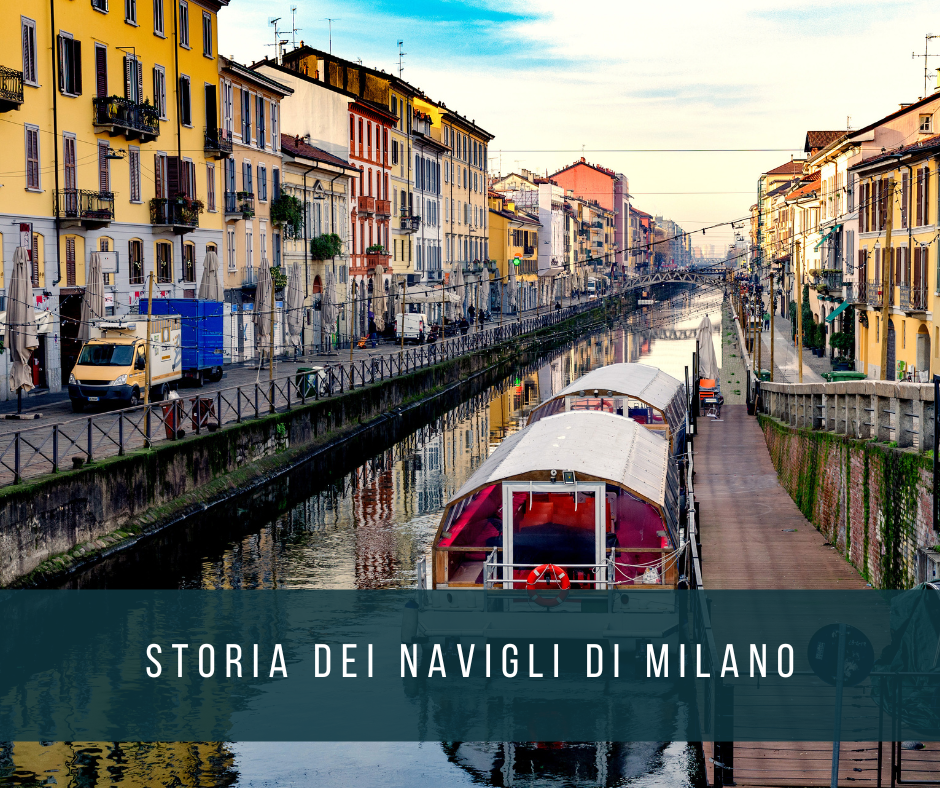The history of the canals is long and complex and starts with the Romans and the construction of canals used to divert water from the rivers Seveso, Olona and Lambro. Over the centuries, the channels have had several crucial functions: first, irrigation, than, defensive and finally, to feed the mills and transport goods and people.
The Naviglio Grande was born from the river Ticino, near Ponte Oleggio. Built in 1177, the channel arrived in Milan in 1257 and was made navigable ten years later. The construction of the Duomo was the reason why basins were implemented in the Naviglio Grande: the basins were designed by Filippo degli Organi da Modena and Fioravante da Bologna and were used to limitate the water level variations. In the first half of the fifteenth century, the Conca Factory was established in order to facilitate the transport of the Candoglia marble from the homonymous village to Sant’Eustorgio pond, where the Naviglio ended. The pond, however, was too far away from the Duomo, where the marble was supposed to arrive, and therefore a new port was built, St. Stephen’s Pond, next to the hospital Ca ‘Granda.
Although it was not Leonardo who invented this system, we have to thank his genius for the improvement of the Navigli’s technology, particularly in relation to the mechanism of opening and closing of the channels.
In 1443, Filippo Maria Visconti approved the project of a canal that would be able to irrigate the countryside near Cernusco. The work was entrusted to Bertola da Novate and, between 1464 and 1496, the Naviglio Martesana was built. The problem of the different water levels between the two channels was solved thanks to the construction of the Ponte delle Gabelle.
The third and final Naviglio is the one called Pavese, whose construction began during the Spanish supremacy and ended with Napoleon.
Apart from this historical overview, we want to point out a couple of interesting places you must visit while walking on the Navigli:
• Ponte di Pietra: initially known as the Bridge of the Virgin Mary because of the presence of a holy portrait in via Corsico, it was first built in wood in 1531, then rebuilt in iron under the Austrian domination and finally in concrete in the ‘900 .
• the Corti dei Navigli: sneak into the houses alongside the Navigli to admire their courtyards
• San Cristoforo church, a picturesque church at the edge of the Naviglio Grande, whose facade is extremely unique and contains a Roman oratory dating back to 1192 and a chapel built by Gian Galeazzo Visconti in 1402.
And, finally, after this cultural tour, grand yourself a gelato in one of the best ice cream parlors of all time, the Gelateria della musica in Via Giovanni Enrico Pestalozzi, 4, just outside San Cristoforo church.
Additional information:
Naviglio Grande, Milano, MI, Italia


